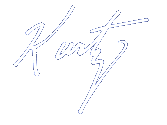The Pavement Series
- Mark Kurtz
- Feb 26, 2022
- 4 min read
This post came about from an exhibit at the Adirondack Artists Guild (of which I am a member) in February 2022. The Guild has usually used the month of February to exhibit imagery made by its members that reflect on that year’s Winter Carnival theme. 2022’s theme was “Totally 80s”, so Artist Guild members rummaged around in the back fo their closets to find work they made in the 1980s, or in some way reflected on the 1980s. I was in art school from 1981 to 1984 so I chose an image from my BFA final exhibition.
This image was one of about 20 pieces that was in that exhibition in May 1984. Although the exhibit did not have a title other than “my final show” at the time, I have since been calling it the “Pavement Series”. It grew out of an original assignment when I was first in art school, which was black & white night photography. I drifted away from that theme over the ensuing couple years at Alfred, including working in color, but returned to it in my senior year. Although what initially captivated me was the incredible range of gray tones in the images and the texture of the pavement compared to other elements (manhole covers for example) in that landscape, I also realized that I had to be creating visually interesting images so composition had to be a significant consideration. So, like in the case of these images, things like pavement markings, curbs, potholes, etc became interesting elements within the frame. In this entire body of work I often composed very tightly to the edges, particularly to the top of the image, with visual elements leading the viewer through the image and often up to the top edge. For those interested in the tech: these were shot on Kodak Plus-X film, all night images with exposures from 3 to 20 minutes long, using very small aperture size to increase the depth of field as much as possible. I used a 4x5 large format field view camera with Grafex 135mm lens made by Wollensak (that actually came off either a Speed Graphic or Crown Graphic camera). Careful metering was critical and a good light meter was necessary (I used a Gossen Luna-Pro light meter - still have it, and still use it). Focusing was tricky - the light coming through a large format camera is not very bright and it makes it difficult to see the image. I used the movements of the camera to focus: when the lens board and film back is at the angles that the planes of each of those intersects with the flat surface I was photographing (parking lots, streets, etc - all very big flat surfaces) the entire images would come into focus - I would then put a flashlight at the closest point and another one at the furthest point, both pointing back at the camera and would then move the lens board and focus the camera until both of those flashlights were in sharp focus. Then I would “stop the lens down” (set the aperture size to a very small opening) thereby increasing the depth of field. Between using the flashlights and the camera movements and a small aperture, I knew I would have everything in sharp focus. Kodak Plus-X was a fine grain film so the final prints would be tack sharp.
I was going out at 3:00 and 4:00 in the morning to get the photographs (when there would be the least amount of traffic). When I started on the concept it was in the middle of winter so it was often quite cold when I was shooting so I would set up the photograph, open the shutter and then go wait in the car for the next 5, 10, or 20 minutes it might take for a particular shot. Early on when I was doing this late night/early morning photography I would get toward the end of a particular exposure and a car would come through the frame and ruin the shot. Eventually I figured out that all I needed to do was put a black piece of paper in front of the lens when a car approached, which had virtually no impact on the image with the very long exposures I was shooting. The local police (I was doing this shooting in small towns around Alfred, in southwestern New York State) would often come by and ask what I was up to - as soon as I said I was an Alfred art student, I quickly got a sense of “oh, one of them” and they quickly dismissed any concern and went on their way.
The images were printed on Ilford Ilfobrom Gallerie paper (in the darkroom - this was looong before digital) as 16x20 prints. I still have all these original prints at my studio (including the one that hangs in the Guild’s “Totally 80s” exhibit) - stop by and check them out!






Comments